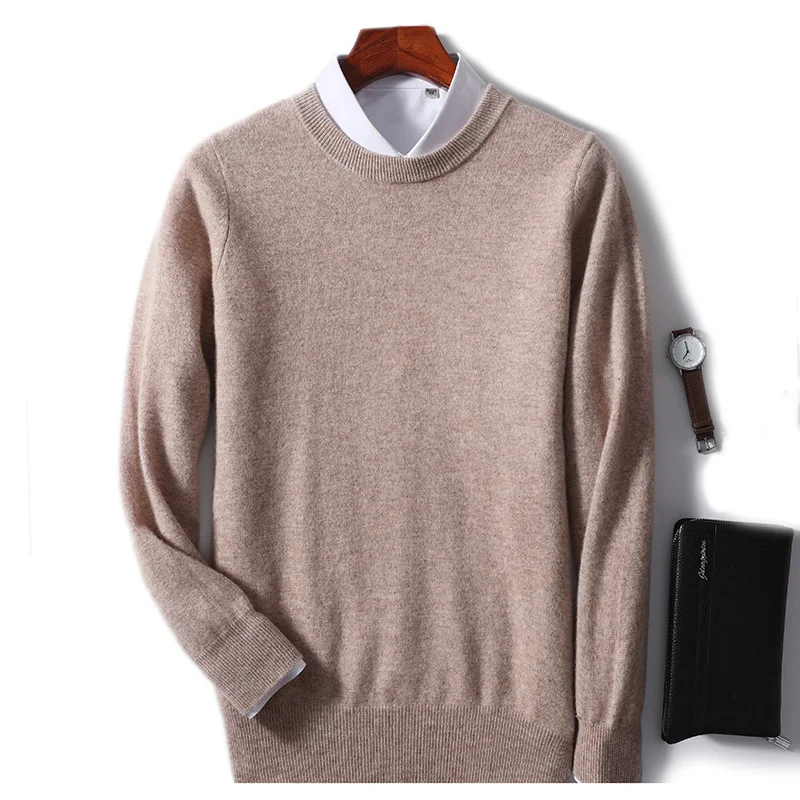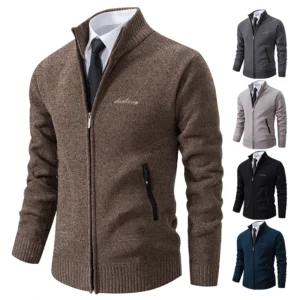Introduction
When it comes to creating luxurious handmade items, the selection of cashmere ply stands as one of the most crucial decisions you’ll make. The ply of your cashmere yarn fundamentally determines how your finished project will look, feel, and wear over time. Understanding ply is essential because it affects everything from drape and warmth to durability and stitch definition.
Premium cashmere, particularly Grade A with fibers under 16 microns in thickness, transforms from exceptional to extraordinary when matched with the right ply for your specific project. Whether you’re crafting a delicate shawl that flows like water or a substantial sweater to ward off winter chill, your ply choice will significantly impact the final result.
In this guide, we’ll explore how different cashmere plies behave and which are best suited for various projects, helping you make informed decisions that elevate your comprehensive guide to cashmere yarn weight understanding. With the right knowledge, you’ll be able to select cashmere yarn that perfectly aligns with your creative vision.
Understanding Cashmere Ply: The Foundation of Luxury Yarn
Ply refers to the number of individual strands twisted together to create the final yarn. When examining cashmere yarn labeled as “2-ply” or “4-ply,” you’re seeing a direct reference to how many strands have been spun together to create that particular yarn.
The construction process is fascinating: individual cashmere fibers are first spun into single strands, then these strands are twisted together to create plied yarn. This twisting serves multiple purposes:
- It adds strength to the delicate cashmere fibers
- It helps maintain consistent thickness throughout the yarn
- It influences how the yarn behaves when knitted or crocheted
A common misconception is that ply automatically indicates thickness. While higher ply counts often result in thicker yarns, the individual strand thickness also matters significantly. Two very fine strands might create a 2-ply yarn that’s thinner than a 1-ply yarn made from thicker single strands. This relationship between understanding cashmere ply thickness and overall yarn behavior is essential to grasp.
For premium cashmere, the exceptionally fine fibers (under 16 microns) provide superior softness across all ply counts, but how these fibers are spun and plied determines whether that softness translates into a whisper-light wrap or a substantial winter sweater.
How Ply Affects Key Cashmere Characteristics
Thickness and Weight
The ply count directly influences the overall thickness of your yarn. Generally, as ply increases, so does yarn diameter and weight. A 2-ply cashmere creates a finer fabric than a 4-ply worked at the same gauge. This relationship becomes particularly important when considering the intended use of your project—lightweight scarves benefit from lower plies, while winter garments may require higher plies for adequate warmth.
Warmth and Insulation
While cashmere is naturally insulating, the ply count affects how much warmth a finished piece will provide. Higher ply counts typically create more substantial fabrics with increased insulation properties. The multiple strands create tiny air pockets within the yarn structure that trap body heat efficiently. A 6-ply cashmere sweater will generally provide significantly more warmth than a 2-ply version of similar design.
Durability and Longevity
Durability improves with additional plies because the twisted structure distributes tension more evenly across multiple strands. This is why 2-ply vs 4-ply cashmere guide comparisons often highlight durability differences. While single-ply cashmere offers exquisite softness, it typically pills more readily and shows wear sooner than multi-ply alternatives. The twisting process also helps lock fibers in place, reducing shedding.
Drape and Hand-feel
Lower ply counts generally create fabrics with more fluid drape, while higher plies produce more structured fabrics. A 1-ply or 2-ply cashmere shawl will cascade elegantly around the shoulders, while a 4-ply or 6-ply piece will hold its shape more definitively. This relationship between ply and drape directly impacts which projects are best suited to different ply counts.
Stitch Definition
Multi-ply yarns typically provide better stitch definition than single-ply options. The twisted structure creates more distinct stitches, making textured patterns like cables and lace more pronounced. For projects where stitch definition is crucial, selecting an appropriate ply can dramatically enhance the visual impact of your design.
Common Cashmere Ply Types and Their Ideal Applications
1-Ply Cashmere: Delicacy and Elegance
1-ply cashmere represents the most delicate end of the spectrum, offering extraordinary lightness and ethereal softness. This single-strand construction creates fabric with exceptional drape that flows and moves with unmatched grace.
Pros:
– Unparalleled lightness and softness
– Exceptional drape quality
– Feels virtually weightless against the skin
– Creates garments with elegant, fluid movement
Cons:
– Less durable than multi-ply options
– Prone to pilling and snagging
– Requires gentle handling during knitting and wearing
– May not provide sufficient warmth for cold weather
Best suited for:
– Delicate lace shawls and scarves
– Lightweight summer wraps
– Fine neckwear for formal occasions
– Projects where drape is the primary consideration
When working with 1-ply cashmere, use smaller needles (typically US sizes 1-3) and handle the yarn gently to avoid breaking. This yarn excels in creating heirloom-quality pieces where lightweight to heavyweight cashmere guide considerations favor the delicate end of the spectrum.
2-Ply Cashmere: The Versatile Standard
2-ply cashmere has earned its reputation as the go-to choice for many projects due to its excellent balance of qualities. It bridges the gap between delicacy and durability, offering enough strength for everyday wear while maintaining wonderful softness and drape.
Pros:
– Balanced weight-to-warmth ratio
– Good durability for regular wear
– Maintains excellent drape quality
– Widely available in various colors and brands
Cons:
– Can still pill with heavy use, though less than 1-ply
– May not provide enough structure for highly textured projects
– Not warm enough for extreme cold weather applications
Best suited for:
– Everyday sweaters and cardigans
– Year-round scarves and accessories
– Lightweight hats and gloves
– Projects requiring balance between drape and structure
Many women’s cashmere pullovers are crafted from 2-ply yarn precisely because it offers this ideal balance of qualities. When working with 2-ply cashmere, US needle sizes 3-5 typically yield pleasing results for most garments.
3-4 Ply Cashmere: Enhanced Warmth and Structure
Moving up to 3-ply and 4-ply cashmere introduces noticeably more structure and substance to your projects. These medium-weight yarns offer enhanced warmth while maintaining enough flexibility for comfortable garments.
Pros:
– Improved durability and resilience
– Better stitch definition for textured patterns
– Enhanced warmth for cool weather wear
– Good balance between structure and comfort
Cons:
– Less fluid drape than lighter plies
– More bulk in seams and detail areas
– Higher cost per project due to increased yarn quantity
– Can feel warm in heated indoor environments
Best suited for:
– Structured cardigans and sweaters
– Winter accessories like hats and scarves
– Medium-weight throws and blankets
– Textured stitch patterns and cable work
The added substance of 3-4 ply cashmere makes it ideal for cashmere cable knit sweaters where stitch definition and structure are essential. These yarns typically work well with US needle sizes 5-7, allowing textured stitches to stand out beautifully.
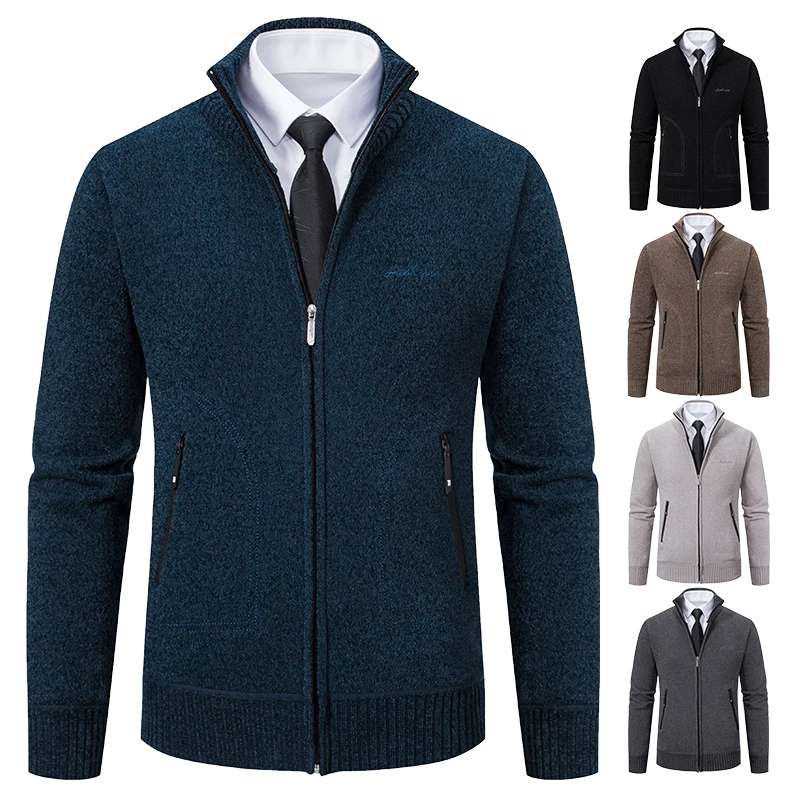
6-Ply and Higher: Maximum Warmth and Durability
At the substantial end of the spectrum, 6-ply and higher cashmere yarns deliver exceptional warmth and durability. These heavyweight options create fabric with remarkable insulation properties and structural integrity.
Pros:
– Maximum warmth for cold weather applications
– Superior durability and longevity
– Excellent structure for defined shapes
– Minimal pilling compared to lighter plies
Cons:
– Limited drape and flexibility
– Significant bulk, especially in seams
– Higher cost due to greater yarn quantity needed
– Can feel heavy when worn for extended periods
Best suited for:
– Heavy winter outerwear
– Substantial blankets and throws
– Chunky scarves and winter accessories
– Projects where maximum warmth is the priority
Many men’s cashmere turtlenecks designed for winter warmth use these heavier plies to maximize thermal properties. When working with these substantial yarns, larger needle sizes (US 7-10+) help maintain appropriate drape while showcasing the yarn’s robust texture.
Cashmere Ply Comparison at a Glance
Use this comprehensive comparison table to quickly identify the best cashmere ply for your specific project needs:
| Ply Count | Thickness | Warmth | Durability | Drape | Best For Projects |
|---|---|---|---|---|---|
| 1-Ply | Ultra-light | Low | Low | Excellent | Lace shawls, delicate scarves |
| 2-Ply | Light-Medium | Medium | Medium | Very Good | Everyday sweaters, scarves, accessories |
| 3-4 Ply | Medium-Heavy | Good | Good | Good | Warmer sweaters, textured projects |
| 6-12+ Ply | Heavy | Excellent | Excellent | Limited | Outerwear, heavy blankets, winter accessories |
When selecting your yarn, remember that fiber quality and ply work together to determine the final characteristics of your project. Premium cashmere will perform better at any ply count than lower-quality alternatives. The table above assumes high-quality cashmere across all categories.
For more detailed guidance on matching yarn weight to your specific needs, explore our guide on choosing the right cashmere yarn weight.
Understanding Ply and Gauge Relationships
Gauge—the number of stitches and rows per inch—is directly influenced by your choice of cashmere ply. Understanding this relationship helps ensure your project matches your intended size and fabric density.
Typically, as ply count increases, so does the recommended needle size and the resulting gauge. Here’s how they generally relate:
- 1-ply cashmere: 7-9 stitches per inch on US 1-3 needles
- 2-ply cashmere: 5-7 stitches per inch on US 3-5 needles
- 3-4 ply cashmere: 4-5 stitches per inch on US 5-7 needles
- 6+ ply cashmere: 2-4 stitches per inch on US 7-10+ needles
These numbers are approximations—your personal knitting tension and style will affect your specific gauge. This is why swatching is absolutely essential, particularly when working with luxury fibers like cashmere. A small investment of time in creating a gauge swatch can prevent costly mistakes in your final project.
When reading patterns, pay close attention to both the recommended yarn weight and the stated gauge. Even if a pattern calls for 2-ply cashmere, you might need to adjust your needle size up or down to match the specified gauge based on your personal knitting style.
For a deeper understanding of how cashmere ply relates to standard yarn weight classifications, our guide on cashmere yarn weights from lace to super bulky provides valuable insights.
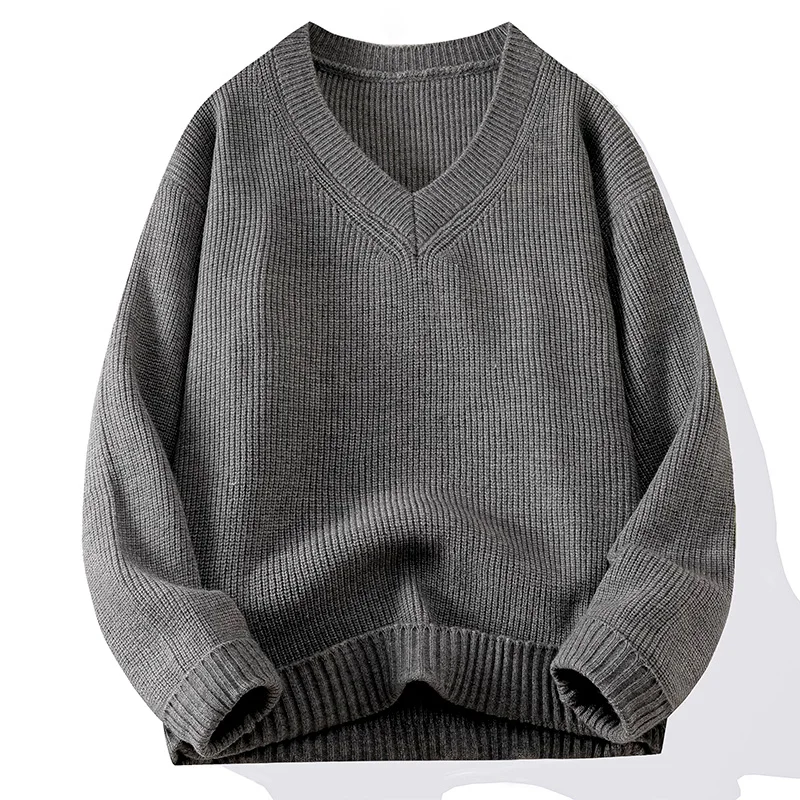
Selecting the Perfect Cashmere Ply by Project Type
Lightweight Wearables: Elegance and Drape
For projects where flow and grace are paramount, 1-ply and 2-ply cashmere are your ideal choices. These lighter plies create fabrics that move beautifully with the body.
- Scarves and shawls: 1-ply for ethereal lightness; 2-ply for slightly more substance while maintaining excellent drape
- Summer wraps: 1-ply creates barely-there coverage for cool evenings
- Lightweight tops: 2-ply offers enough structure while remaining airy and comfortable
To maximize drape in these projects:
– Use needle sizes at the larger end of the recommended range
– Consider lace patterns that enhance natural flow
– Block finished items gently to open up the fabric structure
Cashmere wrap sweaters benefit particularly from careful ply selection, as their elegant appearance depends largely on how gracefully they drape around the body.
Everyday Sweaters and Cardigans: Comfort and Versatility
The sweet spot for daily-wear garments typically falls between 2-ply and 4-ply cashmere. This range offers the ideal balance of comfort, warmth, and durability for pieces you’ll reach for regularly.
- Pullovers and V-necks: 2-ply creates lightweight, year-round options
- Fitted cardigans: 3-ply provides more structure while maintaining comfort
- Business casual sweaters: 2-3 ply works well for office-appropriate layers
- Relaxed weekend wear: 3-4 ply offers more substantial comfort
For maximizing wear resistance in these everyday pieces:
– Consider tighter gauges for high-friction areas like underarms
– Select classic designs that won’t quickly go out of style
– Pay attention to construction techniques that enhance durability
Our collection of cashmere sweaters demonstrates how different ply weights can be optimized for various everyday styles.
Winter Warmth: Substantial Structure and Insulation
When protection against cold weather is your primary concern, turn to 4-ply and higher cashmere yarns. These substantial options provide the thermal properties needed for genuine winter wear.
- Heavy cardigans: 4-6 ply creates substantial but elegant protection
- Outdoor-ready sweaters: 6-ply and higher stands up to winter elements
- Winter accessories: 4-ply for hats and gloves balances warmth with manageability
- Substantial scarves: 6-8 ply creates luxurious neck protection
To balance warmth needs with wearability:
– Consider hybrid designs with heavier plies in the body and lighter plies in areas requiring more flexibility
– Use ribbing and other elastic stitch patterns in cuffs and edges
– Remember that even “heavy” cashmere remains lighter than many wool equivalents
Men’s cashmere cardigans often utilize these heavier plies to create substantive pieces that combine warmth with sophisticated style.
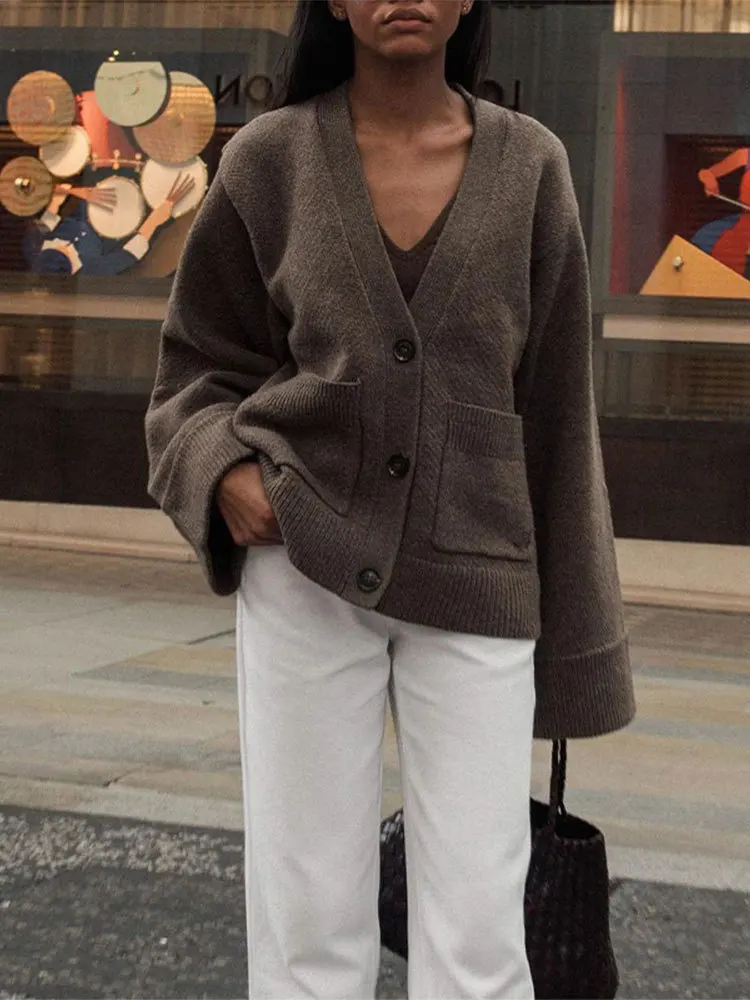
Home Decor: Luxury for Living Spaces
Cashmere isn’t limited to wearables—it also creates exceptional home items with different plies serving different purposes.
- Lightweight throws: 2-3 ply creates elegant drape over furniture
- Substantial blankets: 4-8 ply provides serious warmth for cold nights
- Decorative pillows: 3-4 ply balances visual appeal with durability
- Table runners: 2-ply creates elegant table accents with beautiful drape
When selecting cashmere for home items, consider:
– Higher plies for pieces that will see regular handling
– Tighter gauges for improved durability in frequently used items
– Care requirements based on the item’s intended use
Understanding choosing the right cashmere thickness is particularly important for home items, as they often need to balance aesthetics with practical durability.
Cashmere Wrap Sweaters, Women's Cashmere Pullovers
$75.89 Select options This product has multiple variants. The options may be chosen on the product pageCashmere Cable Knit Sweaters, Women's Cashmere Pullovers
Price range: $111.82 through $112.93 Select options This product has multiple variants. The options may be chosen on the product pageCropped Cashmere Sweaters, Women's Cashmere Pullovers
$155.77 Select options This product has multiple variants. The options may be chosen on the product page- Price range: $102.02 through $109.37 Select options This product has multiple variants. The options may be chosen on the product page
Oversized Cashmere Sweaters, Plus Size Cashmere Sweaters, Women's V-Neck Cashmere Sweaters
$136.87 Select options This product has multiple variants. The options may be chosen on the product page- Price range: $108.11 through $130.03 Select options This product has multiple variants. The options may be chosen on the product page
Beyond Ply: Additional Factors in Cashmere Selection
Fiber Grade and Quality
While ply count is important, the underlying fiber quality is equally crucial. Premium cashmere with fibers under 16 microns in thickness and exceeding 36mm in length will create superior projects regardless of ply count. Look for these indicators of quality:
- Fiber diameter (micron count)—lower numbers indicate finer, softer fibers
- Fiber length—longer fibers create stronger, more pill-resistant yarn
- Consistent color and texture throughout the yarn
- Minimal guard hairs or contaminants
Yarn Construction
How the yarn is spun significantly impacts its performance:
- Woolen-spun cashmere creates loftier, warmer, and softer yarn
- Worsted-spun cashmere produces smoother, more defined yarn with better stitch definition
- Twist level affects both strength and softness—higher twist increases durability but may decrease softness
Cashmere Blends
Pure cashmere isn’t always the best choice for every project. Blends offer unique benefits:
- Cashmere-silk blends enhance drape and add subtle sheen
- Cashmere-wool blends improve durability while maintaining softness
- Cashmere-synthetic blends can increase washability and reduce cost
For more information on how these blends perform, our article on 70 percent wool 30 percent cashmere blends provides valuable insights.
Ethical Considerations
Responsible cashmere production ensures both high-quality fiber and sustainable practices. Look for cashmere from producers who prioritize animal welfare and environmental stewardship.
Color and Dyeing
Dyeing processes can affect how cashmere performs in your project:
- Natural, undyed cashmere often has the softest hand-feel
- Deeply dyed cashmere may feel slightly different due to the dye process
- Variegated or hand-dyed cashmere requires careful pattern selection to showcase color transitions effectively
Expert Tips for Working with Different Cashmere Plies
- Delicate handling: Support the weight of your work to prevent stretching delicate plies
- Needle selection: Bamboo or wood needles grip cashmere better than metal alternatives
- Joining techniques: Use spit splicing or Russian joins rather than knots to maintain integrity
- Tension awareness: Maintain consistent tension to avoid uneven fabric, especially with lighter plies
- Blocking wisdom: Block lightweight items by laying flat; heavier items may benefit from gentle pinning
- Storage solutions: Store finished cashmere items folded rather than hung to maintain shape
- Working environment: Keep cashmere projects away from velcro, rough surfaces, and pet claws
- Swatching importance: Always create a generous swatch and treat it exactly as you’ll treat the finished item
Learning how to judge cashmere quality by touch will help you select the best yarn for your projects and develop a deeper appreciation for fine cashmere.
FAQ: Common Questions About Cashmere Ply
Is higher ply cashmere always better quality?
No. Ply count indicates construction, not quality. A premium 2-ply cashmere can be far superior to a lower-quality 6-ply. Fiber quality (micron count, length, and processing) determines the fundamental quality of the yarn.
What does “ply” actually measure in cashmere yarn?
Ply simply counts how many individual strands are twisted together to form the yarn. It’s a manufacturing specification rather than a direct measure of thickness or quality.
Which cashmere plies work best for beginner knitters?
Medium plies (3-4 ply) are generally easier for beginners as they provide good stitch definition and are less likely to split or break during knitting. These plies also work well at moderate gauges that are comfortable to work with.
How does cashmere ply compare to wool ply in terms of warmth?
Cashmere is approximately 3-8 times warmer than wool by weight. This means a 2-ply cashmere might provide similar warmth to a 4-ply wool yarn, though exact comparisons depend on specific fiber qualities and construction.
Can I substitute different plies in patterns?
Yes, but you’ll need to adjust needle size and potentially recalculate stitch counts to achieve the correct gauge and dimensions. Always swatch when substituting yarn weights.
What is the relationship between ply and yarn weight categories?
Ply doesn’t directly correlate to standard yarn weight categories (lace, fingering, DK, etc.). A 2-ply cashmere from one manufacturer might classify as fingering weight, while another’s might be DK weight, depending on the thickness of the individual strands.
Ensuring Longevity: Caring for Your Cashmere Projects
The beauty of cashmere lies not just in its immediate luxury but in how it can improve with proper care over many years. Your ply selection directly impacts care requirements:
- Lightweight plies (1-2 ply) require the gentlest handling—hand wash using cool water and mild soap, press (don’t wring) to remove moisture, and dry flat away from direct sunlight or heat
- Medium plies (3-4 ply) have similar care needs but can withstand slightly more agitation during washing
- Heavyweight plies (6+ ply) are more resilient but still benefit from gentle care protocols
For all cashmere items:
– Store clean and completely dry in breathable containers with cedar or lavender to deter moths
– Address pills promptly using a cashmere comb or gentle fabric shaver
– Air items between wearings rather than washing after each use
– Seasonal care includes thorough cleaning before storage and checking periodically for pest damage
The initial investment in quality cashmere and appropriate ply selection pays dividends through years of enjoyable use when paired with proper care routines.

